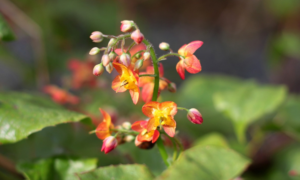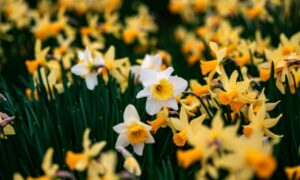We independently research, review, and recommend the best products. If you buy something through our links, we may earn a commission. Learn more.
Hydrangeas have become a staple of the English summer garden. A deciduous shrub that comes in a variety of forms and sizes, the Hydrangea is known for its large rounded blooms that come in shades of pink, blue, white, and purple – depending on the variety and soil conditions.
Thanks to their gorgeous blooms and lush foliage, it’s little wonder that Hydrangeas have become such a popular option for gardeners looking to add a touch of colour to their landscapes. This is a plant that thrives in moist, well-drained soil in sunny to partially shaded locations, and pruning is vital for shaping the shrub and ensuring that it not only looks its best, but also continues to grow.
When is the best time to prune hydrangeas?
With the right timing and techniques, you can easily prune hydrangeas to keep them healthy and attractive.
When it comes to timing, pruning hydrangeas is best done in late winter or early spring before new growth begins. Pruning during this time will allow the plant to direct its energy into developing new stems and blooms as it prepares to enter the growing season.
Pruning before new growth begins is also important because it helps to shape the shrub and encourages a more balanced blooming season. What’s more, by avoiding pruning during the summer months, you help to protect new buds that may be forming. Don’t forget that pruning at the wrong time can actually limit the size and quantity of blooms for the coming season.
What’s the best way to prune hydrangeas?
Before you begin pruning, it is important to understand your particular hydrangea. First, determine if the hydrangea is a macrophylla or lacecap variety. This will influence the type of pruning needed as the two varieties require different methods. For instance, macrophyllas should be pruned quite severely, while lacecaps can be pruned more gently.
Next, consider the general size and shape of the shrub. Is it tall and dome-shaped, or is it more open, with spreading stems? You may need to do some heavier pruning if the hydrangea is particularly overgrown so you can shape the shrub to your desired size and shape.
When pruning hydrangeas, always use sharp, clean tools. Pruning shears come in various sizes, so make sure to choose the right size for your particular shrub. It’s also often helpful to have a long-handled pruner for reaching higher branches. And don’t forget to ensure that your cutting tools are disinfected before and after use, as this will help to reduce the risk of transferring diseases!
Begin by removing all dead wood, which can appear as dark brown or gray woody stems. Cut them off at the base and discard. If any branches are crossing or growing where they shouldn’t, remove them as well. Make sure to cut them just above a bud, as this will encourage new branch growth.
Next, remove any diseased, damaged, or weak wood. Start by cutting back the tallest stems up to one-third of their total length. This will make the shrub more manageable and help encourage new growth.
If you want to achieve a dome shape, make sure to evenly distribute the cuts throughout the top of the shrub. The same concept applies to a spreading shrub—make sure to evenly distribute the cuts along the sides.
Mulching and fertilising hydrangeas
Once you have finished pruning your hydrangeas, make sure to provide additional care such as mulching and fertilizing. This will give the plant a good foundation to continue growing and blooming. Maintaining your hydrangeas with regular pruning and care will ensure healthy growth and abundant blooms for years to come.
After you have finished pruning your hydrangeas, it is important to provide additional care such as mulching and fertilizing. This will help to promote further growth and blooms. Mulching your hydrangeas is especially beneficial, as it helps to retain moisture in the soil and adds vital nutrients to the plant.
Fertilising is also important, though it should be done sparingly and with a fertiliser specifically formulated for hydrangeas. Additionally, it is important to keep an eye out for any signs of disease or damage and treat them accordingly.
With regular pruning and care, your hydrangeas should maintain healthy growth and abundant blooms for years to come.






